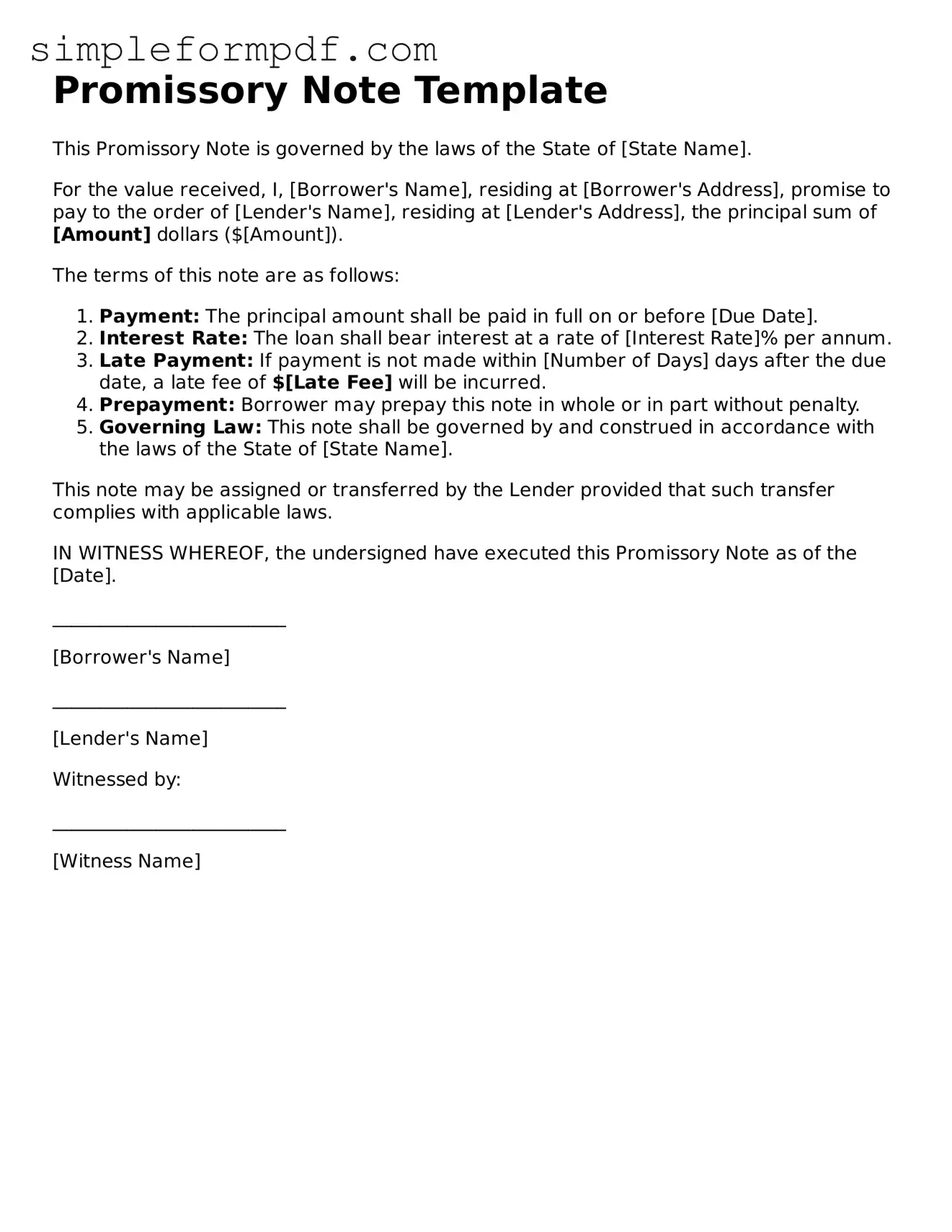Promissory Note Template
This Promissory Note is governed by the laws of the State of [State Name].
For the value received, I, [Borrower's Name], residing at [Borrower's Address], promise to pay to the order of [Lender's Name], residing at [Lender's Address], the principal sum of [Amount] dollars ($[Amount]).
The terms of this note are as follows:
- Payment: The principal amount shall be paid in full on or before [Due Date].
- Interest Rate: The loan shall bear interest at a rate of [Interest Rate]% per annum.
- Late Payment: If payment is not made within [Number of Days] days after the due date, a late fee of $[Late Fee] will be incurred.
- Prepayment: Borrower may prepay this note in whole or in part without penalty.
- Governing Law: This note shall be governed by and construed in accordance with the laws of the State of [State Name].
This note may be assigned or transferred by the Lender provided that such transfer complies with applicable laws.
IN WITNESS WHEREOF, the undersigned have executed this Promissory Note as of the [Date].
_________________________
[Borrower's Name]
_________________________
[Lender's Name]
Witnessed by:
_________________________
[Witness Name]
